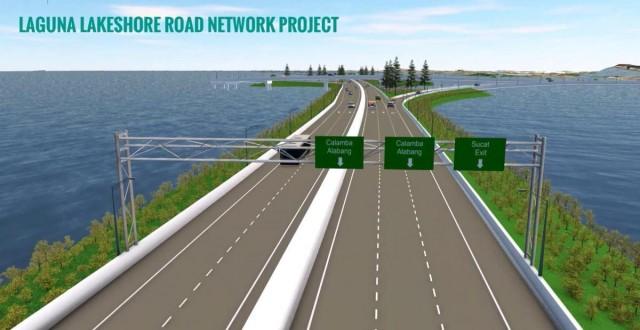DPWH bares infra projects aimed at easing Metro Manila traffic
The Department of Public Works and Highways (DPWH) on Wednesday bared several infrastructure projects aimed at easing traffic congestion and improving mobility in Metro Manila.
At the Bagong Pilipinas Town Hall Meeting on Traffic Concerns convened by President Ferdinand Marcos Jr. in San Juan City, DPWH Secretary Manuel Bonoan highlighted the agency’s traffic decongestion plan which includes expansion and upgrading of transportation infrastructure as well as the construction of new roads and bridges.
Bonoan said the decongestion program is one of the key strategic infrastructure programs of the DPWH aligned with the 2023-2028 Philippine Development Plan and consistent with the President’s eight-point socioeconomic agenda to reduce transport and logistics cost.
The decongestion program, the DPWH chief said, “focuses on the improvement and expansion of the national road network by building more by-passes, diversion roads, expressways, flyovers, interchanges and underpasses.”
Among the projects cited was the completion of the mainline of the 18-kilometer Metro Manila Skyway Stage 3, which had reduced travel time from Buendia to Balintawak from two hours to 15 to 20 minutes.
Bonoan added that Skyway Stage 3’sTomas Claudio-Polytechnic University of the Philippines Sta. Mesa Section is ongoing and out of the target 28 ramps, 22 are completed, three are on-going and the other three ramps are under planning stage.
The DPWH chief also mentioned the 7.7-kilometer NLEX-SLEX Connector Road as another initiative that will decongest and bypass EDSA.
Bonoan said the elevated expressway, traversing mostly along the PNR rail track from Caloocan to Plaza Dilao in Manila, will reduce travel time from South Luzon Expressway to North Luzon Expressway from two hours to 20 minutes.
The project is already 95% substantially completed and now has three interchanges located in C3 Road/5th Avenue in Caloocan, and España and Magsaysay Boulevard in Manila.
The NLEX-SLEX Connector Road Project is targeted to be fully completed this year.
Bonoan also mentioned the 32-kilometer Southeast Metro Manila Expressway (C6 Expressway, Phase I) as among the projects under the DPWH’s decongestion plan.
The C6 Expressway, Phase I is seen to reduce travel time from Bicutan to Batasan from two hours to 30 minutes.
The DPWH chief said right-of-way acquisition for the project is ongoing.
Likewise, the C5 South Link Expressway is expected to reduce travel time from R-1 Expressway to SLEX/C5 from 40 minutes to 10 minutes.
The Merville to C5/SLEX and E. Rodriguez to Merville Sections of the expressway are operational.
The Public Works chief also cited the Laguna Lakeshore Road Network Project-Phase I, which involves the construction of a 51-kilometer road network along Laguna Lakeshore from Calamba to Bicutan will cater to the increasing traffic volume in the southern corridor of Metro Manila.

Detailed engineering design for the Laguna Lakeshore Road Network Project – Phase I is 97% complete.
Loan for the construction of the project is underway with the Asian Development Bank (ADB), according to the DPWH chief.
The 44-kilometer Cavite-Laguna Expressway (CALAX) was also highlighted as it is expected to reduce travel time from CAVITEX in Kawit to SLEX Mamplasan in Laguna from two hours to 35 minutes.
The 17.4 kilometers from SLEX Mamplasan to Silang-Aguinaldo Interchange is already operational, while the remaining sections will be completed next year.
The DPWH chief said the Public Works Department is also prioritizing the construction of new bridges crossing Pasig River and Manggahan Floodway.
The bridges will provide alternative linkages between major thoroughfares and increase the number of usable roadways that would decongest traffic in EDSA and other major roads in Metro Manila.
Bonoan said three bridges have already been completed, namely Binondo-Intramuros Bridge; BGC-Ortigas Center Link Road Project; and Estrella-Pantaleon Bridge.
The design and build contracts for the other bridges are on-going and civil works will start this year.
In particular, civil works for the North and South Harbor Bridge and Palanca-Villegas Bridge crossing Pasig River are targeted to start by the end of this year or early part of next year. Meanwhile, the construction of Eastbank-Westbank Bridge 2 crossing Manggahan Floodway is set to commence in September 2024.
Bonoan, likewise, mentioned the 32-kilometer Bataan-Cavite Interlink Bridge across Manila Bay, which is set to be the country’s longest bridge once constructed.
“It is the biggest and the single most expensive project of DPWH which aims to reduce the travel time between Bataan and Cavite from five hours to 45 minutes bypassing Metro Manila,” he said.
The detailed engineering design of this P219-billion bridge project in Luzon has an accomplishment of 97%, with final approval of design plans currently ongoing.
Meanwhile, the transport road and bridge rehabilitation project along EDSA aims to mitigate the large economic losses due to traffic in Metro Manila.
The project is currently proposed for inclusion to the Japan International Cooperation Agency (JICA) technical cooperation project for large-scale road and bridge replacement and rehabilitation including the total rehabilitation of EDSA.
“Improving the structural integrity and seismic resilience of existing bridges remains a top priority for the government,” Bonoan said.
In particular, the rehabilitation and replacement of Guadalupe and Lambingan bridges, under the JICA-funded Metro Manila Priority Bridges Seismic Improvement Project, is set to commence this year.
This will ensure the safety of about 365,000 motorists who traverse EDSA through the Guadalupe Bridge, and about 30,257 motorists that pass by Lambingan Bridge every day.
Bonoan said that the DPWH will continue to develop and conduct further study on infrastructure projects that will alleviate traffic in Metro Manila in coordination with various stakeholders.
The DPWH chief said the agency will also continue assisting the Metropolitan Manila Development Authority in road clearing and removal of obstructions as well as promote active transport by building more bike lanes and pedestrian infrastructure in coordination with the Department of Transportation. —KG, GMA Integrated News




